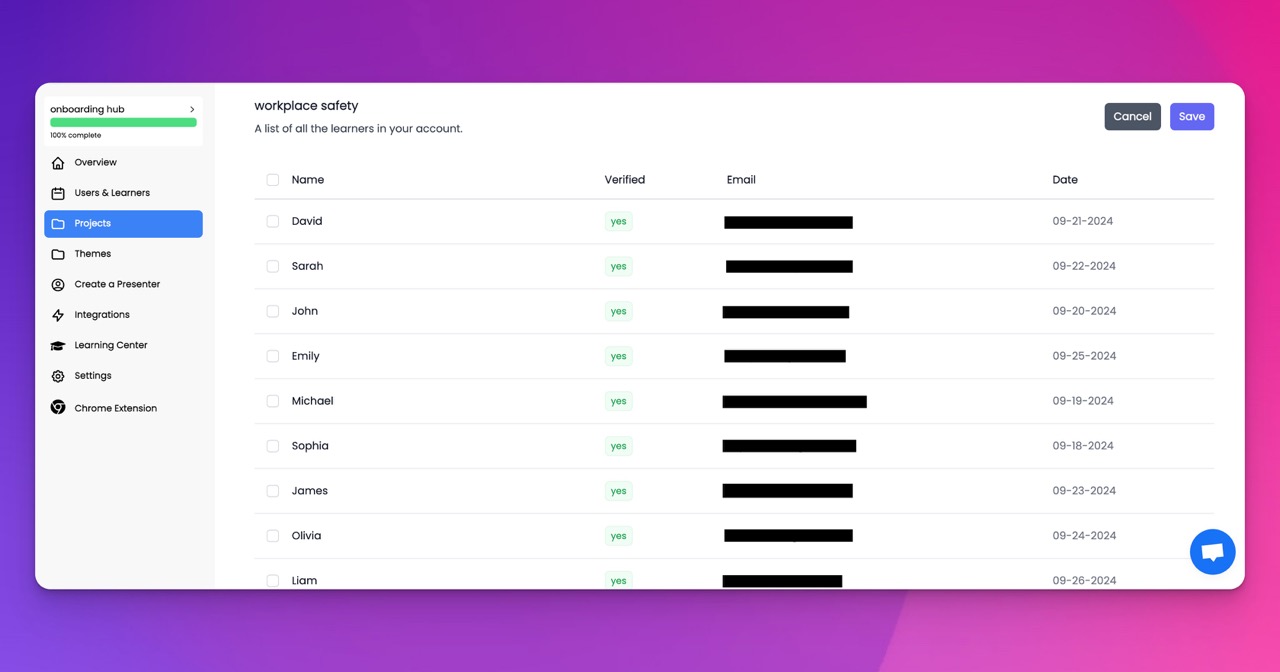🎉 Trainday now integrates with Zendesk and Hubspot 🎉 Trainday now integrates with Zendesk and Hubspot 🎉 Trainday now integrates with Zendesk and Hubspot
🎉 Trainday now integrates with Zendesk and Hubspot
🎉 Trainday now integrates with Zendesk and Hubspot
Contact
Empowering New Hires - The Transformative Benefits of Data-Driven Onboarding Programs
When it comes to employee onboarding, the difference between a warm welcome and a chaotic first day can be the difference between retaining a star hire and losing them within their probation period. For modern organizations, onboarding isn’t just about completing paperwork and giving the office tour; it's an opportunity to set new employees up for success. Enter data-driven onboarding programs—an innovative approach that’s reshaping how companies empower their workforce from day one.
What Is Data-Driven Onboarding?
Data-driven onboarding leverages insights from various data sources to create personalized, efficient, and impactful onboarding experiences. Rather than relying on generic presentations or outdated manuals, this approach uses technology to tailor training modules, track progress, and optimize outcomes.
From job-specific training paths to real-time progress tracking, data-driven onboarding ensures that every new hire gets the knowledge and support they need to hit the ground running.
The Transformative Benefits of Data-Driven Onboarding
1. Personalization at Scale
No two roles—or employees—are exactly alike. Data-driven onboarding allows organizations to craft training programs that address the specific needs of each role. Using data sources such as job descriptions, performance metrics, or industry compliance requirements, onboarding programs can deliver content that is both relevant and engaging.
For example, an onboarding program for a construction site manager might focus on OSHA compliance and project management, while a customer service representative might receive training tailored to handling client interactions and company-specific software.
2. Accelerated Time-to-Productivity
One of the biggest challenges for employers is reducing the time it takes for new hires to become fully productive. With data-driven onboarding, employees can quickly access the exact resources they need to perform their jobs effectively. This minimizes downtime and accelerates learning curves, benefiting both the employee and the organization.
A well-structured onboarding program can reduce the time it takes for employees to contribute meaningfully to their teams, ultimately boosting operational efficiency.
3. Improved Knowledge Retention
The traditional "firehose" approach to onboarding—where employees are bombarded with information all at once—leads to low retention and high stress. Data-driven onboarding programs can use quizzes, interactive content, and spaced repetition techniques to enhance knowledge retention. Real-time analytics can identify areas where an employee might be struggling, allowing managers to offer timely support.
This not only empowers new hires but ensures that critical information isn't lost in the onboarding process.
4. Enhanced Engagement
Interactive, personalized onboarding programs keep employees more engaged compared to static, one-size-fits-all approaches. Data-driven tools can incorporate gamification elements, progress tracking dashboards, and AI-driven feedback to make onboarding more dynamic and motivating.
When new hires feel that their training is meaningful and designed for their success, they’re more likely to be enthusiastic about their roles.
5. Data-Backed Decisions for Continuous Improvement
The beauty of a data-driven system is that it doesn’t stop at deployment. By analyzing onboarding data, organizations can identify bottlenecks, measure success rates, and continuously improve their programs. For example, if a particular training module consistently yields lower quiz scores, it may indicate that the content or delivery method needs to be revisited.
Such insights enable HR teams to refine the onboarding process, ensuring it remains effective and relevant as roles evolve.
How to Get Started with Data-Driven Onboarding
Leverage Existing Data Sources: Tap into job descriptions, performance metrics, compliance reports, and industry trends to design relevant training modules.
Invest in the Right Technology: Use a platform like Trainday to automate content creation, track progress, and provide real-time feedback.
Integrate AI: Incorporate AI tools to personalize content, generate insights, and deliver interactive training experiences.
Monitor and Optimize: Regularly review program analytics to identify areas of improvement and update content accordingly.
Accelerate Compliance.
Deliver OSHA-Ready Courses Instantly.
Empower your team with data-driven training solutions tailored to your industry's safety standards. Stay compliant, reduce risks, and boost productivity with AI-powered course creation.
